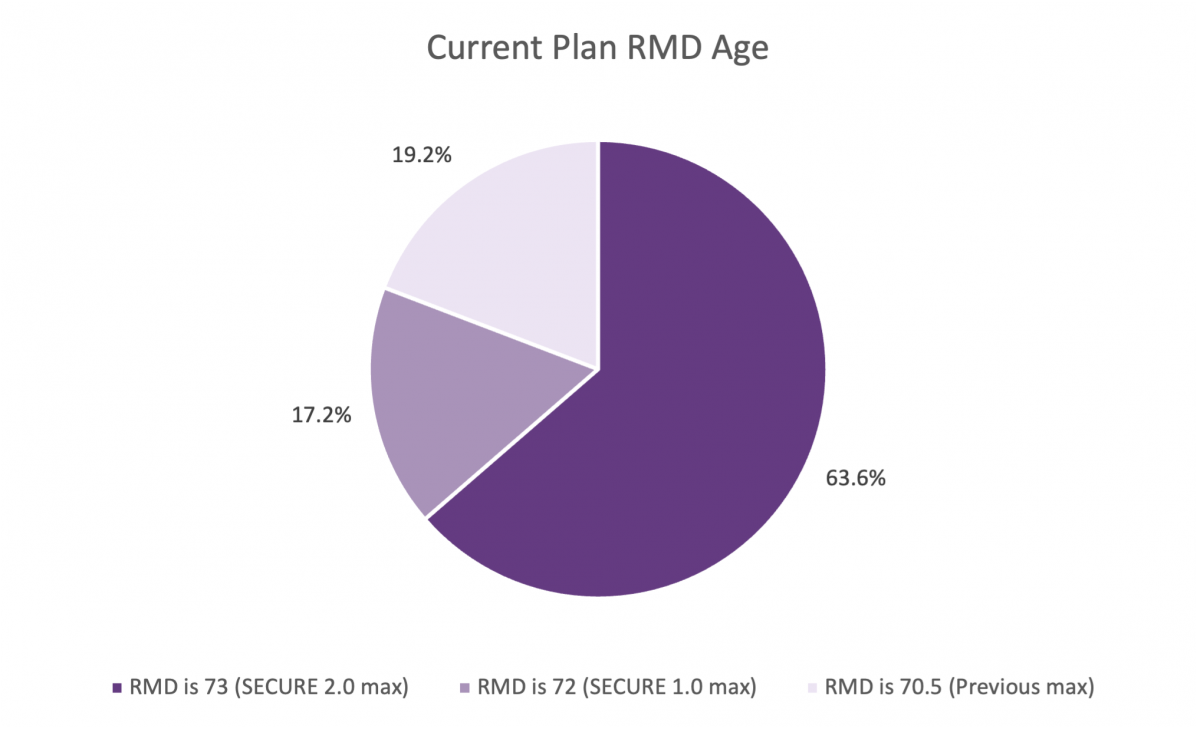Advertisement
Aging Up RMDs
Sponsored by: MFS Investment Management
A Required Minimum Distribution (RMD) age is the statutory maximum age at which participants must begin to take withdrawals from their 401(k) plan. Because the taxes are deferred until distribution, the government does not allow you to keep it there forever – they want their money at some point. A retirement plan can set its own RMD age that is lower than the government set age, but most use the legally defined RMD age. SECURE 1.0 raised the RMD age limit to age 72 from the previous age of 70.5 years old. SECURE 2.0 raised it even further to age 73 (with an increase to age 75 in ten years). There is a bit of a misconception that this provision and the RMD age increase is mandatory. The plan can choose not to increase the RMD age as allowed under both SECURE acts, but as most plans have historically followed the legally defined RMD age, there seems to be a perception that they must increase the age as allowed. We asked plan sponsors what their current RMD age is – is it still the previous statutory limit, did they increase it to 72 under SECURE 1.0, or did they increase it to age 73 under SECURE 2.0 (or is it something else).

More than 60 percent of plans stated they have increased the RMG age to 73 while twenty percent have kept the plan-set RMD age 70.5, and 17 percent have a current RMD age of 72. A few plans thought this change was mandatory, while a few others do plan to increase the age, they just haven’t yet. Comments follow.
Adjusted to Age 73 per SECURE 2.0
- Did this on both pension and 401(k) plans
- Isn't it mandatory?
- This allows participants to take advantage of delaying a distribution until they need it or take one sooner. No reason not to increase age as the account assets are always available if they want to take out assets earlier.
- Yes, did not know it was optional.
Did not Adjust to Age 73 per SECURE 2.0
- Plan to adjust to 73
- Considering adjustment starting 2025.
- We would like to change it to 73 to reflect retirement trends of employees working past standard retirement age.
- With many of our population retiring early we tried to accommodate & make easier for former EE's


